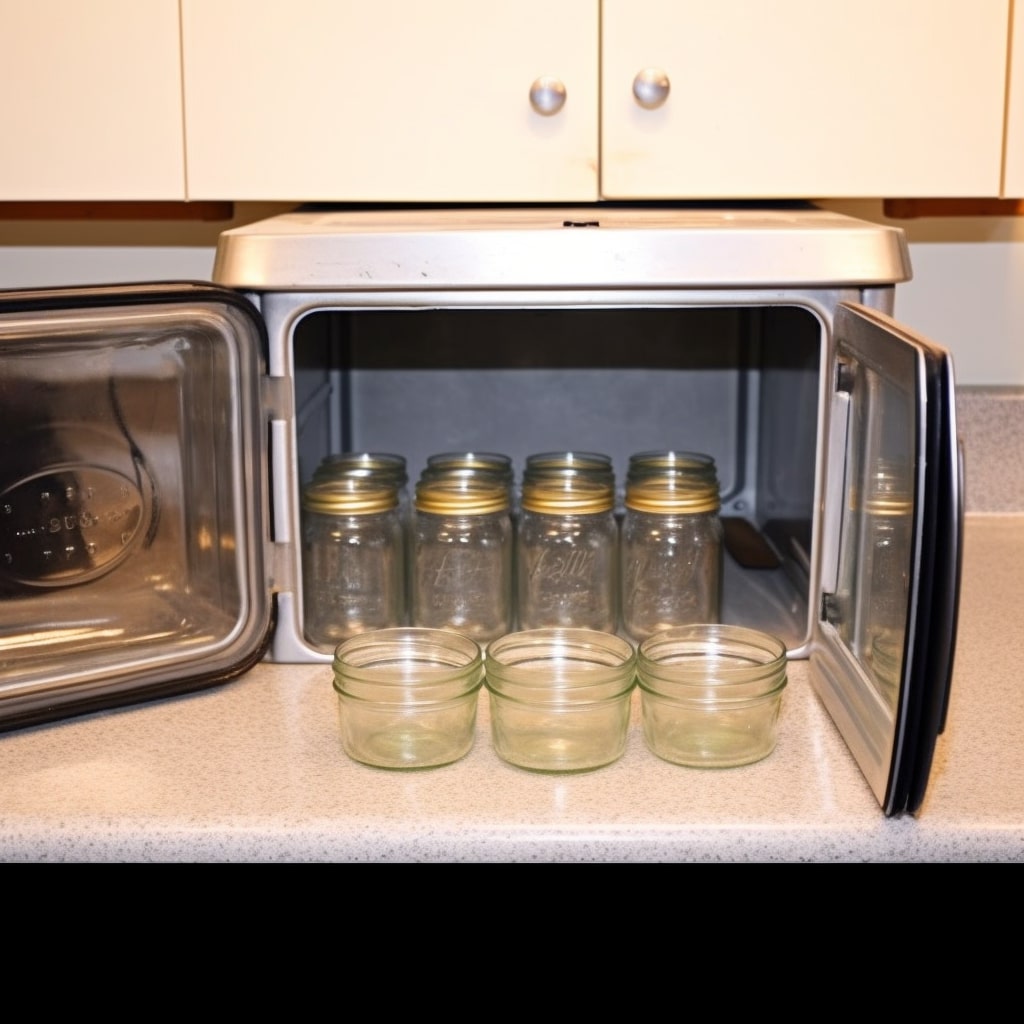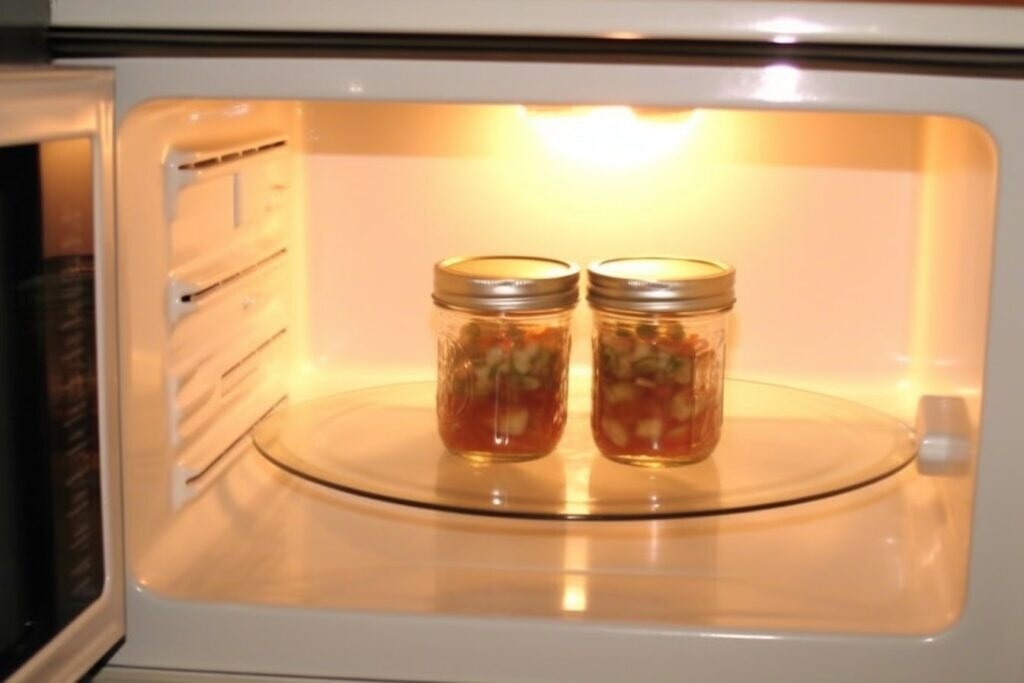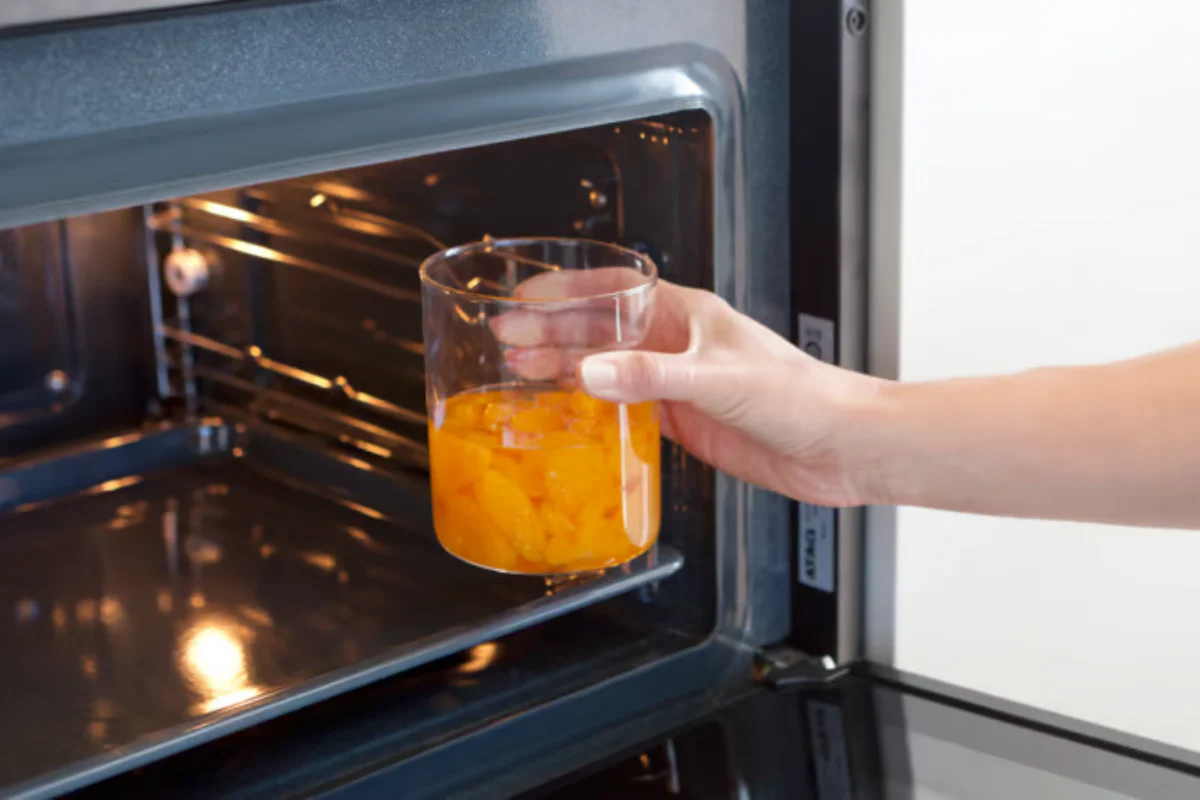If you’ve ever been in a hurry to heat up some leftovers or warm a meal prep jar, you might have wondered: is it actually safe to put a Glass Jar in the microwave? It’s a common kitchen question with a surprisingly nuanced answer. While we often think of glass as a microwave-safe material, the reality depends heavily on the type of glass and the jar’s design. In this article, we’ll break down the science behind what happens to glass in the microwave, so you can make an informed decision without any guesswork or messy accidents.

Table of Contents
Are Glass Jars Microwave-Safe?
Based on general experience, not all glass jars are suitable for microwave use. It’s best to use ones that are clearly labeled as “microwave-safe.” Another good option is jars made from borosilicate glass, which is known for being heat-resistant.
Many jars we come across every day—like those from store-bought pasta sauce or jam—are typically made from standard soda-lime glass. This type of glass can crack or even shatter under sudden temperature changes, which is exactly what can happen in a microwave. That’s why it’s usually not recommended to microwave them unless stated otherwise.
Borosilicate glass, on the other hand, handles heat much better. It can usually withstand temperatures up to 500°F without cracking or warping. Another advantage is that it resists staining and doesn’t hold onto food odors—making it both practical and durable.
When it comes to plastic containers, always check for a “microwave-safe” or “BPA-free” label. Plastic has a lower heat resistance and can melt or release chemicals when overheated. It also tends to stain and retain smells more easily than glass.
Material | Microwave-Safe (if labeled) | Chemical Safety | Heat Tolerance | Stain/Smell Absorption |
|---|---|---|---|---|
Glass | Yes | High | Up to 500°F (if borosilicate) | Does not absorb |
Plastic | If BPA-free/labeled | Moderate/Low | Lower (melts at high temp) | Can absorb and stain food |
How to Identify Microwave-Safe Glass Jars
A simple rule is to always look for the “microwave-safe” symbol on the jar or its packaging. If it’s made from borosilicate glass, that information is often mentioned too. It’s better to avoid microwaving any glass jar that isn’t explicitly labeled as safe—especially common food jars not designed for reheating. Using the wrong type of jar not only risks breaking your container but can also be a safety hazard.
Risks and Safety Concerns When Microwaving Glass Jars
Not every glass jar can handle the microwave. Using one without a “microwave-safe” label can be risky. Here’s what could go wrong:
Cracking or Shattering: Everyday glass jars aren’t always designed to withstand microwave heat. They may crack or even shatter due to rapid or uneven heating—especially if they already have small cracks or flaws.
Thermal Shock: Placing a cold jar straight from the fridge into the microwave is not recommended. The sudden temperature change can cause the glass to break.
Uneven Heating and Burns: Non-microwave-safe glass might develop hot spots. This can lead to scalding hot areas that could burn you or ruin your food.
Chemical Leaching: While less common with glass, lower-quality jars with coatings or additives could potentially release unwanted chemicals when overheated.

Watch Out for Metal, Decorations, and Flaws
It’s not just the glass type that matters. External factors play a big role too: Any metal—including lids, bands, or even metallic paint—can cause sparks or fire in the microwave. Always remove them before heating. Jars with air bubbles, chips, or uneven thickness are more prone to breaking under heat stress due to uneven expansion. Over time, glass weakens. Even heat-resistant brands can fail if the jar is old, scratched, or damaged.
Tips for Safer Microwaving
To reduce risks, follow these guidelines:
Allow chilled jars to come to room temperature before microwaving.
Always inspect jars for cracks, chips, or other damage—if you spot any, don’t use them.
Remove all lids and metal seals.
Avoid jars with painted designs or glossy finishes that may contain metal.
When in doubt, transfer food to a container you know is microwave-safe.
Don’t place a hot jar on a cold surface right after heating—this can also cause thermal shock.
Generally, jars that are thin, unlabeled, visibly flawed, or originally used for non-food purposes should not be microwaved. Trusting clear, microwave-safe labeling and using common sense can help you avoid accidents.
How to Check if a Glass Jar is Microwave-Safe
Figuring out whether a glass jar can go in the microwave doesn’t have to be confusing. Here’s a straightforward guide to help you decide safely and confidently.
Look for the “Microwave-Safe” Label
Start by checking the jar’s bottom or its packaging. Many manufacturers include a symbol—like wavy lines or text that says “microwave safe.” You’ll often find this on jars made for canning or reheating, such as those from brands like Mason or Pyrex. Keep in mind that decorative jars or older containers might not have any labeling, so it’s best to assume they’re not safe unless confirmed.
Try the Water Test
If there’s no label, a simple water test can help. Fill the jar with water and microwave it on high for about a minute. If the jar remains cool while the water gets hot, it’s likely microwave-safe. If the jar becomes hot, it’s not suitable—this means the glass absorbs too much energy and could crack under higher heat or longer use.
Check for Damage
Carefully inspect the jar for any cracks, chips, or scratches—even tiny ones. Flaws like these create weak points where heat stress can cause the glass to crack or shatter. It’s always better to be safe and avoid using damaged jars in the microwave.
Don’t Overheat
Even microwave-safe glass has its limits. Try not to heat jars for more than 2–3 minutes at a time. Prolonged heating can cause thermal stress and weaken the glass over time. For best results, heat in short intervals and stir if possible to help distribute the heat.
Always Remove the Lid
Never microwave a jar with the lid on—especially if it’s metal or has a seal. Sealed containers trap steam, which increases pressure and could make the jar burst. Always cover food with a microwave-safe plate or vented lid instead.
Quick Safety Checklist
To quickly review, your jar is most likely microwave-safe if it:
Has a “microwave-safe” symbol or label
Shows no cracks, chips, or damage
Stays cool during the water test
Is heated without the lid and for short periods
If you’re ever unsure, the safest choice is to transfer food to a container you know is microwave-safe. A little caution can help avoid accidents and keep your kitchen moments stress-free.

Types of Glass Used in Microwave-Safe Jars
Knowing what kind of glass your jar is made from can help you use it more safely and effectively in the microwave. The most common types you’ll come across are borosilicate glass, tempered glass, and soda-lime glass. Each has different properties when it comes to handling heat.
Borosilicate Glass: Best for Heat Resistance
Borosilicate glass is known for its ability to handle sudden temperature changes—like going from the fridge to the microwave—without cracking. This is because it’s made with boron oxide, which strengthens the glass and expands less under heat. You’ll often find this type in laboratory equipment and trusted kitchen brands like Pyrex. It’s an excellent choice for heating liquids or meals since it distributes heat evenly and resists thermal shock.
Tempered Glass: Durable and Safer If Broken
Tempered glass is made by heating and rapidly cooling ordinary glass, resulting in a stronger material. One of its key safety features is that if it does break, it crumbles into small, granular pieces rather than sharp shards. It’s commonly used in ovenware and food storage containers from brands such as Razab. While it’s stronger than regular glass, it’s still wise to avoid extreme temperature shifts—like moving it directly from the freezer to the microwave.
Soda-Lime Glass: Common but Less Reliable
This is the most widely used type of glass, found in everyday jars like those for sauces, pickles, or jams. While cost-effective and perfectly fine for storage, soda-lime glass isn’t the best choice for microwaving. It’s more prone to cracking under quick temperature changes due to its higher thermal expansion. Although it might survive brief warming, it’s generally not recommended for microwave use—especially for longer heating times.
What Makes Glass Microwave-Safe?
Good microwave-safe glass should:
Remain cooler than the food inside (low microwave absorption)
Be non-porous to avoid retaining stains or odors
Free from chemicals that could transfer to food
Brands like Pyrex and Razab are popular because they use either borosilicate or tempered glass—materials designed to perform well under heat. When in doubt, always check the labeling or manufacturer’s instructions to be sure your container is microwave-safe.
Where Can You Find the Best Glass Jars?
When it comes to reliable and aesthetically pleasing glass jars, TP Glass Bottle Manufacturer has built a strong reputation over years of dedicated craftsmanship and service. They provide a wide variety of glass containers suitable for food, cosmetics, beverages, and home storage—combining practicality with style.
What Makes TP Glass Bottle Manufacturer a Trusted Choice?
Consistent Quality: Their jars are made to be durable and microwave-safe where applicable, meeting high production standards for everyday use and commercial purposes.
Customization Options: Whether you’re looking for classic round jars, square containers, or large-capacity bottles, they offer tailored solutions in size, shape, and finish to help your products stand out.
Eco-Conscious Production: Sustainability is at the core of their process. All glass jars are 100% recyclable and manufactured with environmentally responsible methods.
Competitive and Clear Pricing: They provide affordable options for both small businesses and bulk orders, making quality glass packaging accessible to everyone.
Worldwide Shipping: With reliable distribution across North America, Europe, and Southeast Asia, they serve global clients efficiently and with responsive customer support.
Choose TP Glass Bottle Manufacturer for Your Packaging Needs
Whether you need stylish cookie jars, elegant cosmetic containers, or reliable storage solutions, TP Glass Bottle Manufacturer offers functional and beautiful glass packaging designed to keep your products safe and enhance your brand image.
Summary Table: Glass Jar Microwave Safety
Key Factor | Safe for Microwave? | Details/Data |
|---|---|---|
Type of Glass | Only some types | High-grade borosilicate or tempered glass jars are safe. I’ve found that common soda-lime glass jars can crack from heat. |
Microwave-Safe Label | Essential | I recommend you look for a microwave-safe symbol or a clear label. If there is no label, I would not consider it safe. |
Damage (chips, cracks) | Unsafe | Even small cracks or chips increase the risk of the jar breaking in the microwave. Based on my experience, you should inspect each jar before you use it. |
Metal Components | Unsafe | You must remove metal lids, seals, or decorative foils. Metal can cause sparks and is a fire risk. |
Sudden Temperature Changes | Unsafe | Thermal shock can crack any type of glass. This happens when you microwave a cold jar from the fridge. I suggest letting jars reach room temperature first. |
Even Heating Technique | Improves safety | To improve safety, I suggest you stir the contents now and then. Use microwave-safe vented covers. Heat in short bursts and loosen lids to let steam escape. |
Glass Clarity or Material Degradation | Safer than plastics | I prefer glass over plastic because glass does not release chemicals. It stays clear and strong after many uses in the microwave. |
Common Misconceptions | Varied | Many people believe all glass jars are safe for the microwave, but they aren’t. Jars can break. You should never microwave metal lids. Using unsafe glass can damage microwaves. |
Glass is not only a reusable and eco-friendly material—it’s also 100% recyclable without any loss in quality. But when it comes to microwaving, not all glass behaves the same way. Borosilicate glass, for example, offers excellent thermal resistance. It can handle temperatures ranging from -20°C all the way up to 400°C, making it one of the safest choices for microwave use.
That said, not every jar is microwave-friendly. A typical risky scenario involves taking a soda-lime glass jar—like a store-bought pasta sauce container—directly from the refrigerator into the microwave, especially if it still has a metal lid attached. This can lead to the glass cracking or the metal sparking, turning a simple reheating task into a safety hazard. Most microwave incidents involving glass occur due to a few common oversights: using unlabeled jars, leaving metal components attached, subjecting the glass to sudden temperature shifts, or overlooking tiny cracks that weaken the structure.
For those health-conscious readers, microwave-safe glass jars are generally a better option than plastic. They don’t release chemicals into food, won’t retain stains or odors, and with proper care, can last for years. Choosing the right container doesn’t just prevent accidents—it also supports sustainable and healthy eating habits.

